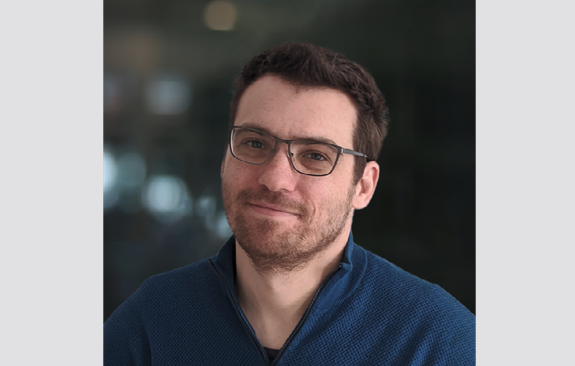Welcome New Faculty: Leon Aksman
Join us in welcoming the newest member of the INI faculty, Leon Aksman, PhD, who is applying insights from his background in engineering, neuroimaging, and financial modeling to examine the pathology of Alzheimer’s disease.
Dr. Aksman’s career path has been a bit unorthodox. After completing bachelor’s and master’s degrees in engineering, he worked in finance for several years. When he returned to academia to pursue a doctorate in neuroimaging, he applied his knowledge of quantitative modeling to one of the field’s most pressing questions: What causes Alzheimer’s disease (AD) and how does it progress over time?
After completing his doctorate at Kings College in London and postdoctoral training at University College London, Dr. Aksman joined the faculty at the USC Mark and Mary Stevens Neuroimaging and Informatics Institute last fall. Here, he is continuing his work applying statistics and machine learning to multimodal neuroimaging data, as well as cognitive and biofluid measures.

“Because there aren’t yet effective treatments for Alzheimer’s, what really drives me is to understand the disease better,” he said. “We can develop better treatments when we know more about the sequence and heterogeneity of pathologies in AD.”
For example, he used a mathematical model to analyze neuroimaging data from the Alzheimer’s Disease Neuroimaging Initiative (ADNI), including subjects in early, middle, and late stages of developing amyloid and tau pathologies. His model revealed two subtypes: one where amyloid pathology develops first and one where tau pathology develops first. This finding challenges the prevailing view among AD researchers that amyloid pathology always accumulates first.
“We got this result in a very data-driven way, but now we have to confirm it using both longitudinal and postmortem data,” Dr. Aksman said.
This research can help answer questions about whether AD manifests differently in certain patients, which can ultimately inform the development of targeted treatments.
Dr. Aksman is also analyzing data from Longitudinal Aging Study in India Diagnostic Assessment of Dementia (LASI-DAD), which includes data on adults in India who have developed dementia, with measures of literacy and urban/rural habitation. He will explore whether AD progression can be classified into various subtypes among this population.
“Most Western studies have not captured the full spectrum of socioeconomic variation in cognitive decline, which may mean that we have yet to explore the full heterogeneity of dementia,” he said.



